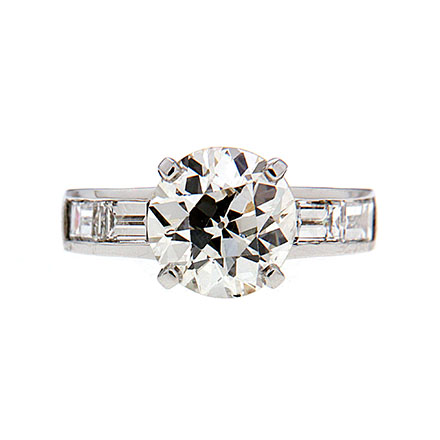Notes on Diamond Quality

When browsing for loose diamonds for engagement rings on valentinmagro.com, you’ll find a chart listing each diamond’s traits. The Four Cs of carat, color, cut and clarity are listed, as well as shape and certification. Polish and symmetry are other factors, which we offer on a scale from Excellent to Fair. As with the Four Cs, they influence the look of your jewel.
Polish helps sharpen light as it reflects from a diamond. The jewel’s atomic structure can make the gleam especially bright. When it’s evaluated, gemologists study the gemstone at 10X magnification. They note the type and amount of quirks, such as polish lines, which inform the final grade.
Symmetry is when one half of form mirrors the other. Most diamond shapes have at least one line of symmetry. Others, like emeralds and round brilliants, have several. Symmetry is evaluated by examining the jewel from above as well as from the side.
Together, polish and symmetry determine the finish of a jewel. This in turn covers details of a diamond’s cut. Symmetry helps ensure an equal amount of light travels through the sides of a stone. Polish determines the quality of each facet, as well as surface shine. Both help to brighten diamond rings.
Clarity is a major factor in distinguishing diamonds from one another. The polish and symmetry characteristics of a stone also help in this regard. An extra facet or piece of the original rough surface can serve as part of a jewel’s fingerprint. They help make unique engagement rings all the more distinctive.





